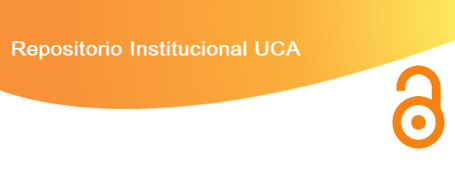QUE DIOS Y MI FAMILIA ME LO DEMANDEN. POSIBLES FUENTES DE LA EJEMPLARIDAD FEMENINA EN IV MACABEOS
Keywords:
Atonement – Biblical exegesis – intertextuality – IV MaccabeesAbstract
The textual frame of the IV Book of the Maccabees has stirred profound debates due to the difficulties that exist in determining the quantity and quality of its influences. Many traditions from Hellenistic and even Roman fields can be read between its lines to characterize the main characters both morally and ethically. With this scope, the martyrs –which are the link between this work with its source, the canonical II Maccabees– gather inside themselves a series of preexistent textual topics linked to atonement and sacrifice. In this work we will try to prove, consequently, how the character of the mother develops itself as from two literary pillars both equally important: on one hand, the euripidean Alcestis; on the other hand, the Orion’s daughters, briefly mentioned by Ovid in Met. 13.692-699. The union of the two sources will result in the convergence of the political-familiar aspect and the religious one in the mother’s character at the time of her death.Downloads
References
VON ARNIM, J. (ed.) (1968). Stoicorum Veterum Fragmenta [1905]. Stuttgart.
BOERI, M. (2004). “Observaciones sobre el trasfondo socrático y aris-totélico de la ética estoica”, Ordia Prima 3: 107-146.
BOYER, A. – HAYOUN, M. R. (2008). La historiografía judía [2001]. México D. F.
BURNET, J. (ed.) (1967). Platonis opera [1901]. Oxford.
BYWATER, I. (ed.) (1962). ARISTOTELES Ethica nicomachea [1894]. Oxford.
CAVALLERO, P. A. (ed.) (2007). EURÍPIDES Alceste. Buenos Aires.
CAZZANIGA, I. (ed.) (1962). ANTONINUS LIBERALIS Metamorphoseon synagoge. Milano.
COLLINS, J. J. (2000); Between Athens and Jerusalem. Jewish identity in the Hellenistic Diaspora. Livonia.
DIGGLE, J. (ed.) (1994). Euripidis Fabulae. Oxford.
DOSSEY, L. (2008), “Wife Beating and Manliness in Late Antiquity”. P&P 199: 3-40.
FRENKEL, D. (2008). “Roma y Judea: De la admiración a la enemistad” en BUZÓN, R. et. al. (Eds.). Docenda. Homenaje a Gerardo H. Pagés. Buenos Aires: 315-29.
––––––––– (2011). “El martirio en la Septuaginta: II y IV Macabeos”, AFC 24: 59-91.
GUEVARA DE ÁLVAREZ, M. E. (ed.) (2014). Antología gnómica de la literatura griega. Liricos arcaicos (poetas elegíacos y yambógrafos). Buenos Aires.
HAHNEMAN, G. M. (2002). “The Muratorian Fragments and the Origins of the New Testament Canon” en MC DONALD, L. & SANDERS (EDS.) The Canon Debate. Peabody: 405-15.
HALIVNI, D. (1986). Midrash, Mishna, and Gemara. The Jewish predi-lection for Justified Law. Cambridge.
HARDIE, P. (1990). “Ovid’s Theban history: The first ‘anti-Aeneid’?”, CQ 40/1: 224-235.
HAYS, G. (2014). “The Mythographic Tradition after Ovid” en MILLER, J. & NEWLANDS, C. (eds.). A Handbook to the Reception of Ovid. Chichester: 129-143.
VAN HENTEN, J. W. (1995). “Judith as Alternative Leader: A rereading of Judith 7-13” en BRENNER, A. (ed.). A Feminist Companion to Esther, Judith and Susanna. Sheffield: 224-252.
–––––––––––––– (1997). The Maccabean martyrs as Saviours of the Jewish People. A study of 2 and 4 Maccabees. JSJSup 57, Leiden: Brill.
LESKY, A. (1989). Historia de la literatura griega. Madrid.
MAGNUS, H. (ed.) (1914). P. OVIDII NASONIS Metamorphoseon libri XV. Berlin.
MOORE, S. D. – ANDERSON, J. C. (1998). “Taking it like a man: Mas-culinity in 4 Maccabees”. JBL 126/1: 99-127.
PARKER, R. (1996). Miasma. Pollution and purification in Early Greek Religion. Oxford.
PATERSON CORRINGTON, G. (1989). “The Milk of Salvation: Redemption by the Mother in Late Antiquity and Early Christianity”, HThR 82/4: 393-420.
PIÑERO, A. (2007). Literatura judía de época helenística en lengua griega. Madrid.
RAHLFS, A. (ed.) (1971). Septuaginta, id est Vetus Testamentum graecae iuxta LXX interpretes Vol. 1-2 [1935]. Stuttgart.
RENEHAN, R. (1972). “The greek philosophic background of Fourth Maccabees”, RhM 115/3: 223-38.
SAYAR, R. J. (2014). “Te voy a poner como una luz para el mundo (Is. 49.6.4). La figura de Eleazar como ejemplo y paradigma del éthnos hebreo en IV Macabeos”, AFC 27.2: 99-114.
––––––––– (2015). “‘No es imitación de hombres […] sino de la exis-tencia’ (Poet. 1450a16). ¿Dispositivos teatrales en IV Macabeos?” Ponencia leída en el marco del VII Congreso Argentino e Internacional de Teatro Comparado. FHyA–UNR. 12, 13 y 14 de agosto de 2015.
––––––––– (2017). “Si no puedes vencer a tu enemigo... búrlate de él. ¿Elementos de comedia en la constitución de IV Macabeos?” Ponencia leída en el marco de las II Jornadas sobre Comedia y Sociedad en la Antigüedad (JOCOSA II). FFyL–UBA. 27 y 28 de abril de 2017.
TOLA, E. (2007). Ovidio. Metamorfosis. Una introducción crítica. Buenos Aires.
WEIGOLD, M. (2007). The Deluge and the Flood of Emotions: The Use of Flood Imagery in 4 Maccabees in its Ancient Jewish Context. En: XERAVITZ, G. - J. ZSENGELLÉR, The Books of the Maccabees: History, Theology, Ideology. Leiden: 197-210.
WEST, M. L. (ed.) (1972). Iambi et elegi Graeci Vol. 2. Oxford.
WHITE, H. (2003). El texto histórico como artefacto literario y otros escritos. Barcelona.
Downloads
Published
How to Cite
Issue
Section
License






